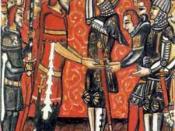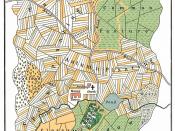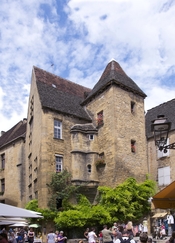The evolution of highly diverse forms, customs, and institutions makes it almost impossible to accurately depict feudalism as a whole, but certain components of the system may be regarded as characteristic: strict division into social classes, i.e., nobility, clergy, peasantry, and, in the later Middle Ages, burgesses; private jurisdiction based on local custom; and the landholding system dependent upon the fief or fee. Feudalism was based on contracts made among nobles, and although it was intricately connected with the manorial system, it must be considered as distinct from it. Although some men held their land in alod, without obligation to any person, they were exceptions to the rule in the middle ages.
In an ideal feudal society, the ownership of all land was vested in the king. Beneath him was a hierarchy of nobles, the most important nobles holding land directly from the king, and the lesser from them, down to the seigneur who held a single manor.
The political economy of the system was local and agricultural, and at its base was the manorial system. Under the manorial system the peasants, laborers, or serfs, held the land they worked from the seigneur, who granted them use of the land and his protection in return for personal services and for dues.
The feudal method of holding land was by fief; the grantor of the fief was the suzerain, or overlord, and the recipient was the vassal. The fief was formally acquired following the ceremony of homage, in which the vassal, kneeling before the overlord, put his hands in those of the lord and declared himself his man, and the overlord bound himself by kissing the vassal and raising him to his feet. The vassal then swore an oath of fealty, vowing to be faithful to the overlord...


